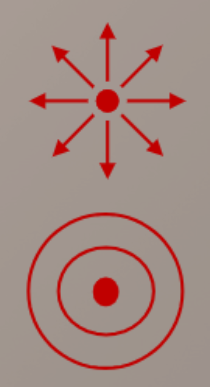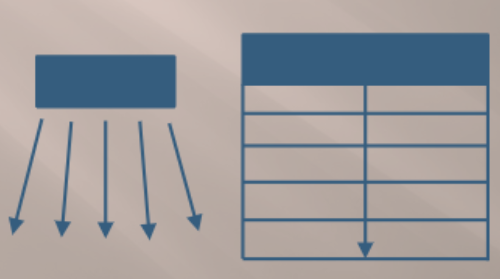Unit 4 - DMU 3313 Physics
1/137
There's no tags or description
Looks like no tags are added yet.
Name | Mastery | Learn | Test | Matching | Spaced |
|---|
No study sessions yet.
138 Terms
high, echoes, interfaces
When pulses of ___ frequency sound (PW) are transmitted into tissues, ___ are created when the sound waves reach ___ between different types of tissue.
location, quality
When echoes return to the source of the sound, they give information about the ___ and ___ of internal structures.
Reflection, Transmission
When sound waves move from one medium to another, there may be: ___ and/or ___.
Two
At least how many mediums are required for something to happen?
Hyperechoic
Describes relatively strong echoes
Hypoechoic
Describes relatively weak echoes
Isoechoic
Means echoes have similar strengths
Anechoic
Means the absence of echoes
Homogeneous
Echoes are very similar (brightness)
Describes tissue or structures that appear uniform in their echo patterns. This means the tissue reflects the same amount of sound waves across its entire area, resulting in a consistent brightness or echo intensity on the ultrasound image.
Heterogeneous
Very different echoes (different brightnesses)
Refers to a tissue or structure that has a varied, non-uniform appearance or texture, with differing echogenicity (brightness) across different areas.
Simple
A structure containing only fluid
Uniform appearance
Complex
A structure containing solid or debris-like components
Refers to a structure that contains both fluid-filled (cystic) and solid components, or that exhibits irregularities or internal structures within the fluid or one that has internal septations (walls) or solid intracystic masses (solids within the fluid)
Interface
The boundary between two different media
Usually shown as a horizontal line
Angle of Incidence
Angle between the direction the ultrasound beam is traveling and a line perpendicular (vertical line) to the interface between the two media
incidence
In wave physics, ___ refers to the event of a wave encountering a boundary or interface between two different media.
Perpendicular Incidence
Refers to the direction of travel of ultrasound waves perpendicular to the interface (boundary) between two media
90 degree incidence, normal incidence, orthogonal incidence
What are some synonymous terms for Perpendicular Incidence?
Reflected (R), Transmitted (T)
If there is perpendicular incidence:
___ sound travels in a direction opposite to the incident (I), which is back to the source
___ sound does not change direction but continues in the same path as the incident sound
vertical
The line perpendicular to the interface is usually shown as a ___ line.
Oblique Incidence
___ ___ is the direction of travel of the incident sound that is not perpendicular to the boundary between two media
Reflected, equal, incidence, perpendicular
If there is oblique incidence:
___ sound does NOT return to the transducer but travels off at an angle ___ to the angle of ___
The angle is measured from an imaginary line ___ to the interface
incident angle
θi
reflection angle
θr
transmission angle
θt
incident, reflection
The ___ angle is EQUAL TO the ___ angle!
propagation speed
The transmission angle depends on the ___ ___ in each medium.
impedance, two
Z1 and Z2 = ___ of ___ different mediums
Stiffness
Impedance = ___
Specular reflectors
___ ___ cause strong reflections off large, smooth surfaces (ONE direction, so stronger); high amplitude
Non-specular reflectors
___ ___ cause weak scattering off large, rough surfaces or small reflectors (MULTIPLE directions, so weaker); low amplitude
Reflected, echoes
___ sound waves (___) from tissues are used to produce images in DMU.
attenuation, gain, constructive, attenuation
Ultrasound waves interact with internal media (tissues) of the human body in various ways. From these interactions, the ultrasound waves may be either weakened through a process known as ___ or may be strengthened through a process known as ___ (___ interference). The most common/frequent interaction is ___.
Attenuation
What do all of these processes/interactions result in?
Geometric Redirection:
Specular reflection
Scattering
Refraction
Diffraction
Divergence
Destructive Interference
Absorption
strong, specular reflectors
Specular Reflection is ___ reflection from ___ ___.
larger, wavelength, smooth, mirror, Impedance (stiffness)
Specular Reflector (must be all three):
An interface that is ___ than the ultrasound ___
The interface is also ___ and ___-like
___ (___) Mismatch
Z1 ≠ Z2
True
True or False: These is no reflection if sound travels through the same medium throughout.
stronger
The whiter the structure, the ___ the reflection.
Stiffness, propagation speed
___ (Z) affects ___ ___ (c)
dimensions
When referring to reflection and scattering, d = ___.
interface
The dimensions (d) refer to the ___.
angle dependent, incidence, 90 degrees, non-frequency dependent
Specular Reflection is ___ ___ because the angle of ___ must be ___ ___ for our transducer to capture the echoes. It is ___-___ ___.
Specular Reflection participates in the ___ of the ___. It diminishes the ___ of the transmitted ultrasound ___.
Incident, Reflection
Transmission = ___ — ___
I, R
T = ___ — ___
Transmission
T =
Incident
I =
Reflection
R =
Scattering
___ is the redirection of sound in many directions by non-specular reflectors
tissue texture
Scattering helps image ___ ___
Parenchyma
The functional tissue of an organ or body part
Backscatter
___ is scatter which travels back in the direction it came from originally
weak, evenly
Scattering produces ___ echoes because the intensity is ___ divided among echoes
Diffuse Reflector, Rayleigh Scatterer
Non-specular Reflectors can be a ___ ___ or a ___ ___
larger, wavelength, rough, reflection, scattering
Diffuse Reflector:
An interface (d = dimensions) that is ___ than the ultrasound ___
___
Produces diffuse ___/___
smaller, wavelength, smooth, rough, scattering
Rayleigh Scatterer:
An interface (d = dimensions) that is ___ than the ultrasound ___
Either ___ OR ___
Produces Rayleigh ___
non-angle dependent, frequency dependent
Scattering is ___-___ ___ because the echoes are reflected in many directions. It is strongly ___ ___.
scatterers, size, impedance, frequency
Scattering intensity is proportional to the total number of ___, ___ of the scatterers, acoustic ___, and ___.
less, incidence
Scattering makes ultrasound (US) imaging ___ dependent on ___ angle.
Refraction
___ refers to the change in direction of ultrasound when it crosses an interface (boundary)
Oblique, angle, propagation speeds, Velocity
There are two requirements for refraction to occur (must be BOTH):
___ incidence
Beam approaches at an ___
Different ___ ___ on either side of the boundary
___ mismatch
c1 ≠ c2
lateral, reflectors
***Refraction results in ___ displacement of ___***
reflection, incidence
At oblique incidence, the angle of ___ = the angle of ___
True
True or False: Since the transducer cannot capture the reflected beam from oblique incidence, it is not useful to DMU.
frequency
In refraction, ___ remains the same after crossing the interface.
wavelength
In refraction, ___ changes in proportion to the change in velocity.
normal
The line perpendicular to the interface is also referred to as “the ___”
normal
The angle of transmission can move toward or away from “the ___”
Snell’s Law
The refraction of ultrasound is governed by ___ ___
sinθi / sinθt = ci / ct
Snell’s Law:
sin of the angle of incidence
sinθi =
sin of the angle of transmission
sinθt =
velocity of the medium of incidence
ci =
velocity of the medium of transmission
ct =
propagation speed
The degree of beam refraction depends on the difference in ___ ___ between the tissues
increases
Refraction degree increases if the difference in velocity ___
greater
If propagation speed through the medium of transmission is greater than the medium of incidence, the transmission angle is ___ than the incidence angle
smaller
The smaller the difference between the propagation speeds, the ___ the change that will occur
greater
The greater the difference between the propagation speeds, the ___ the change that will occur
critical angle, Total Reflection, low, high
When the angle of incidence becomes a ___ ___, the angle of transmission = 90°. This means that the transmitted beam follows the interface without transmission in the medium, a phenomenon called ___ ___. This phenomenon occurs when the beam travels from a ___ velocity medium into a ___ velocity medium.
ci / ct ≅ θi / θt
Formula for calculating the Refraction Angle:
Snell’s Law
What formula do you use to calculate the Critical Angle?
0
sin 0° =
0.5
sin 30° =
0.707
sin 45° =
0.866
sin 60° =
1
sin 90° =
Huygens’ Principle
When a wave is disturbed, each point where there is a disturbance becomes the source of a spherical wave
disturbance
A ___ is simply when there is something in the way of the wave
Diffraction
___ is the spreading out or bending of sound waves around an obstacle or through a small opening
Lateral
___ resolution is affected by diffraction
increases
If diffraction increases, attenuation ___
size
The degree of diffraction is related to the ___ of the source
larger
The smaller the source, the ___ the diffraction
Divergence
___ refers to the spreading out of the ultrasound wave as it travels farther from its source
Huygens’ Principle
The theoretical explanation of the divergence is offered by ___ ___
weaker
The more divergent the wave becomes (far from the straight path), the ___ it becomes (more attenuated)
False
True or False: A point-like source (very small) emits sound spherically. This is an isotropic emission of sound, which means with equal strength in all directions. This type of emission of sound is extremely efficient in DMU (because it’s very weak).

True
True or False: The larger the source (transducer) becomes, the more directional and less divergent the emission of sound becomes; consequently, the ultrasound wave is less attenuated.

superposition of waves
If two or more ultrasound waves overlap, they will undergo a process known as ___ ___ ___
destructive, constructive, complete destructive
From the superposition of waves, a new wave may result, which can be either:
Weaker - ___ interference
Stronger - ___ interference
Total cancellation - ___ ___ interference